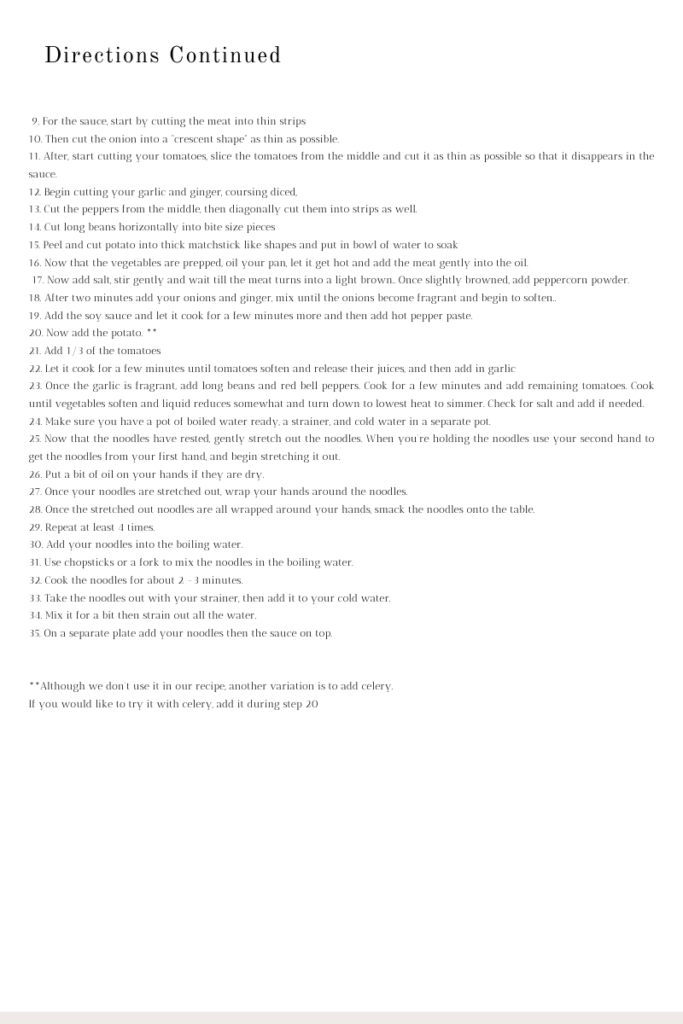A lovely group of women from the Alberta Uyghur Association hosted us in their home to learn more about their culture and to cook up some traditional food. I didn’t know what I was in for, not only did Mehliya, Mukerrem, Ramile and friends show me their remarkable cooking skills, I was immersed in Uyghur culture in a beautiful sunroom in their home, and treated to incredible hospitality- it felt like I was visiting an old friend. The Uyghurs are a Turkic ethnic group originating from the East Turkestan region, located in Central Asia. There is so much rich history around this culture and we encourage you to learn more about it by visiting them at the Heritage Festival or using good old google. The first thing Mehliya shared was the traditional cooking attire; Ramile and Mukerrem had on a beautifully coloured apron, arm ‘guards’, and a head scarf. These are used to keep the arms safe from splattering oil, hair back and away from food, and clothes clean; food made with love, and they sure looked good doing it.

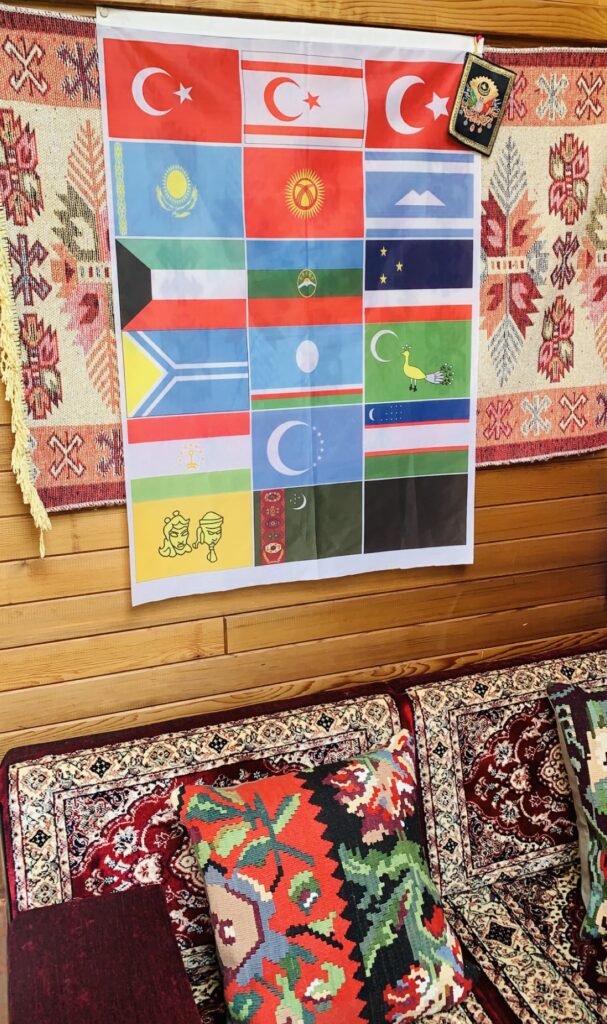
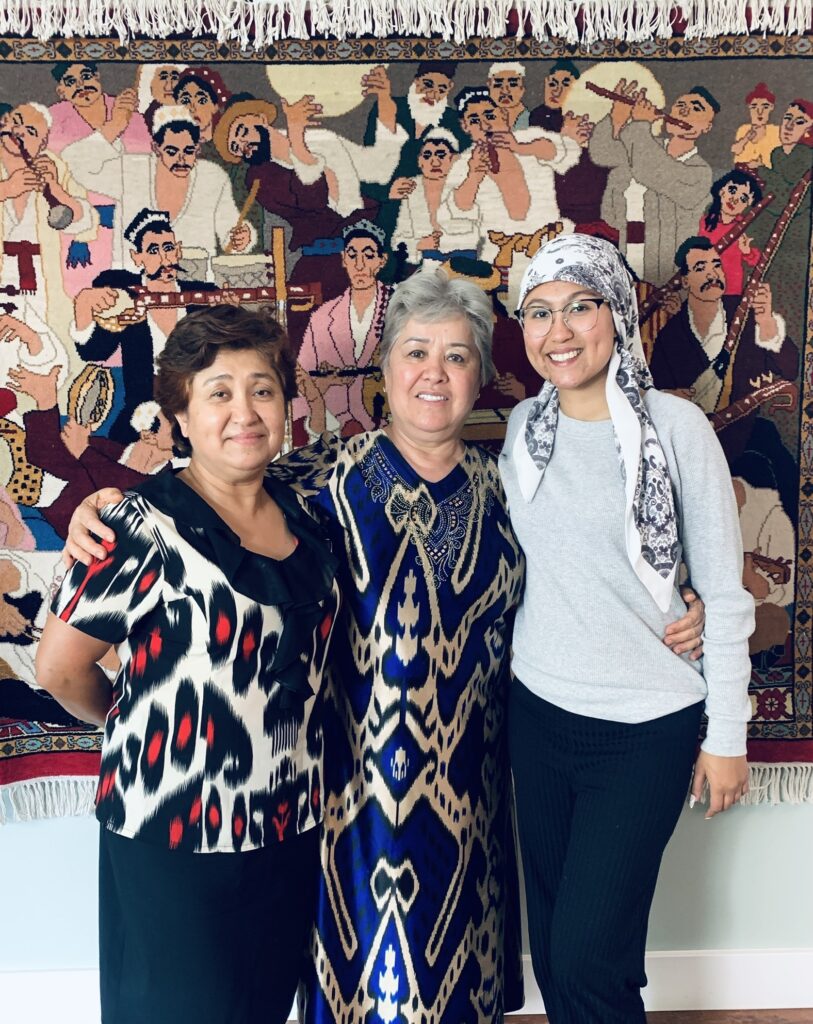
The dish on our menu for the day was Laghmen (hand pulled noodles) accompanied by traditional stir-fry. I thought, okay, this will be yummy, who doesn’t love noodles…. BUT *these* noodles were magical. I definitely have a new appreciation for noodles after seeing Ramile’s technique. The process requires so much skill to get them the right shape, consistency and size- she would roll the dough in between her fingers as she stretched it. The procedure has a few different steps, each one slowly stretching the noodles longer and thinner and yields a loooooong, dense, fresh noodles that are so perfect. I asked how they learn such an impressive method and Mehliya shared that this is passed down through grandmothers’ and mothers’. You start hanging out in the kitchen, watching them, from age 6-ish to learn. She also told us that these noodles are often made on birthdays and the long noodles represent wishes for a long life. Take a look at the whole process below- this is something that we will definitely remember!
Now that we have learned the art of the noodle, we cannot forget the stir-fry… the sauce required to fully enjoy the noodles and bring the meal together. In this dish, they used lamb, as this is one of the most common proteins used back home. Let’s talk more about the ingredients…. there are a few secret ingredients that give this recipe a unique taste. One of the key spices used in flavouring the stew are sichuan peppercorns. Did you know that sichuan peppercorn aren’t from the pepper plant (like most other forms of pepper) but are a berry from the prickly ash tree. Sichuan peppercorns have a slightly bitter taste and create a spicy, tingle-like sensation on the tongue and lips. They are not quite as spicy as other peppercorns and leave a citrusy aftertaste #pepperfacts. One thing that really struck us was how they smell- could they also be used as an air freshener? We think so. Get some. Smell them. Make Uyghur stir-fry. Repeat.
The second secret ingredient used is Sera hot pepper paste- a Turkish hot pepper paste, known as biber salcası. Often used in Turkish cuisine, Sera hot pepper paste can be used in creating meat marinades, in soups or really any dish where you want a little hit of heat. Another cool ingredient we personally don’t use enough is the long beans. Their unique size and consistency (which is different from your average green bean) really added to the texture of the stew and it makes for a refreshing way to bring some green goodness into things. Many of these ingredients can either be found in international sections of your local store (some you will be more likely to find than others) or an Asian grocery store, like Lucky Supermarket here in Edmonton.

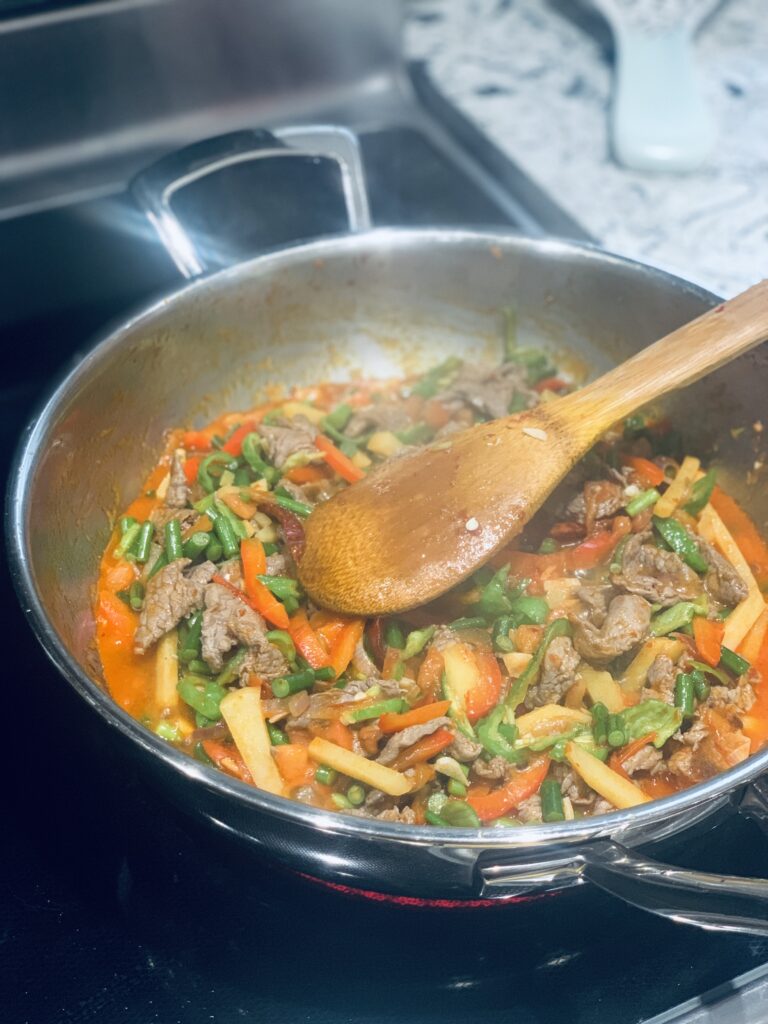
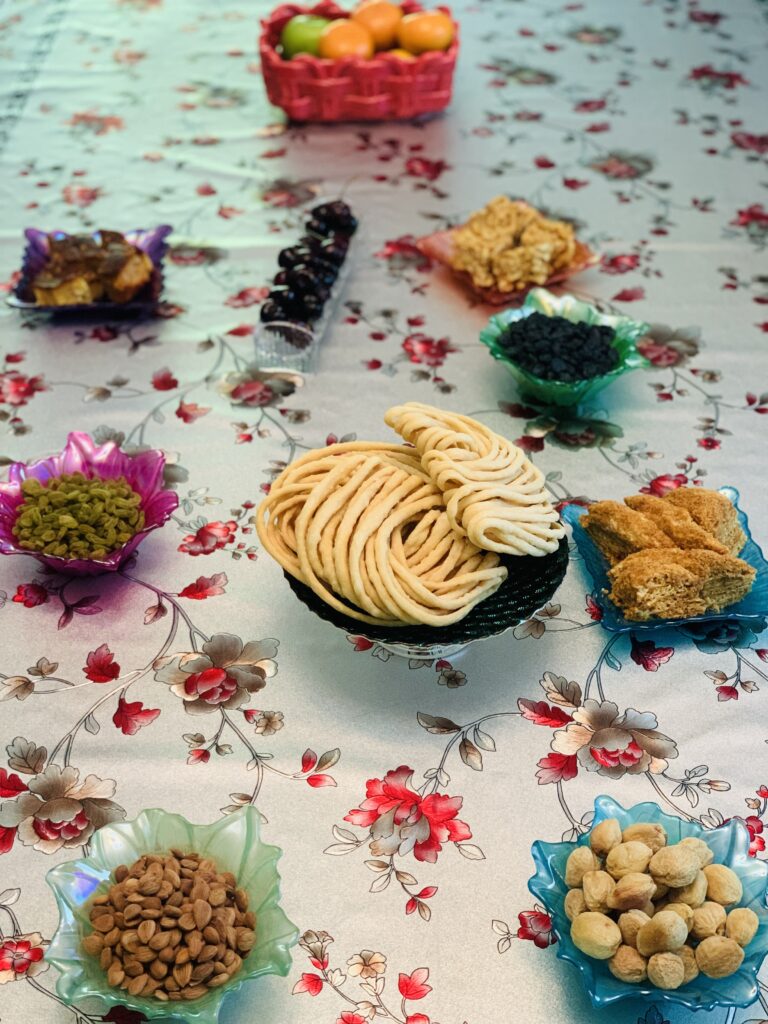
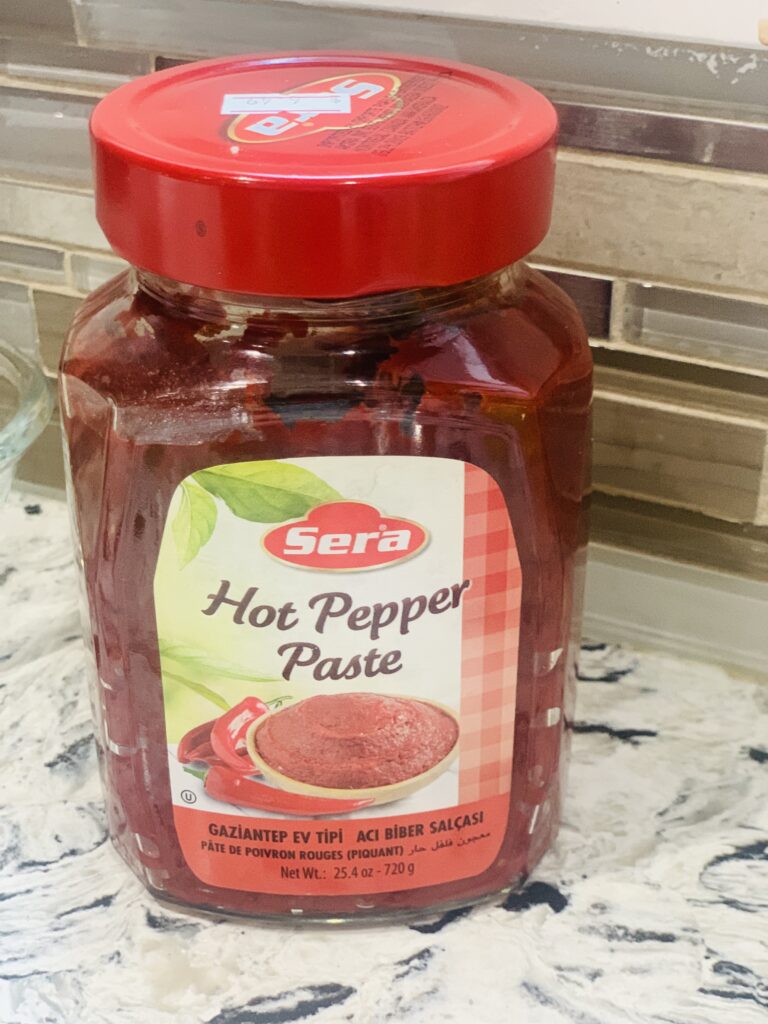

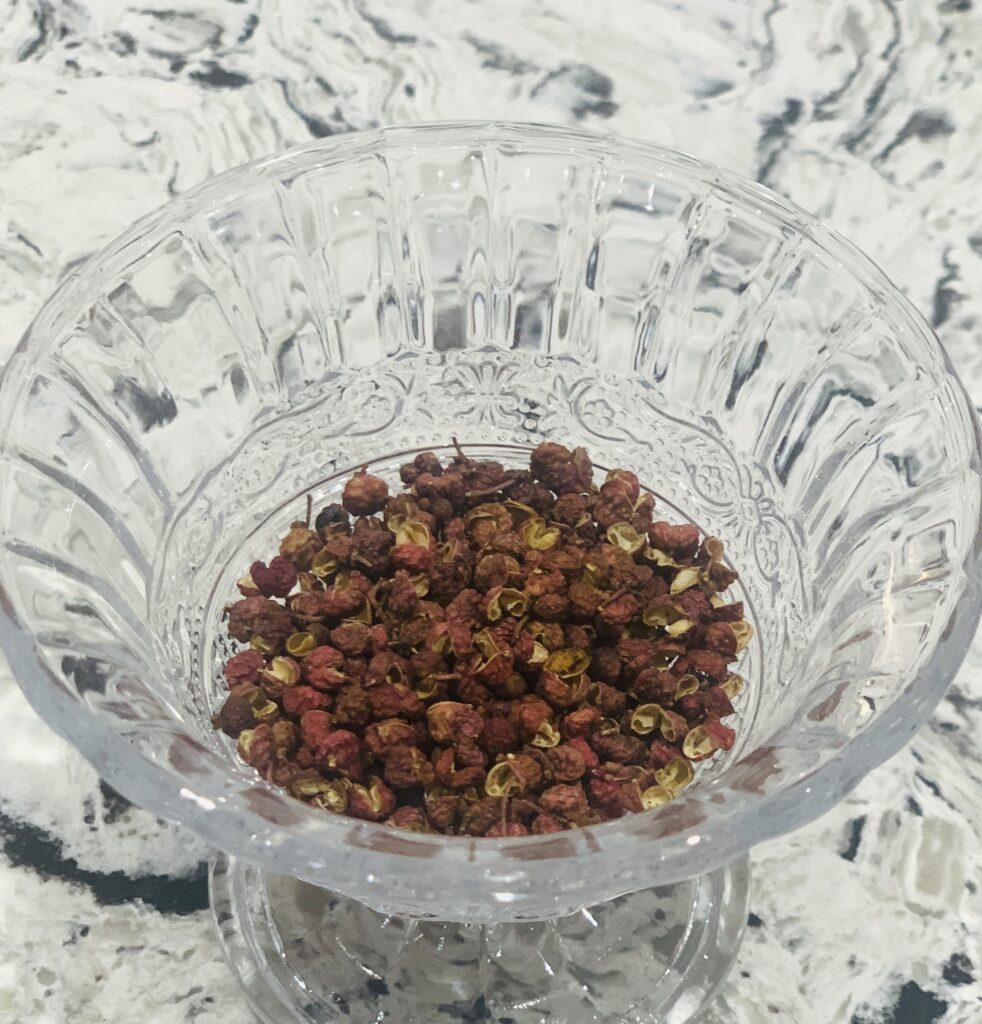
Pro Tips from Ramile and Mukerrem:
- Meat: size makes a difference. When slicing up your lamb, slice it thinner and in a similar shape to other vegetables, which allows for more synchronized cooking times and a uniform appearance. Beautiful food tastes better.
- Add a touch of soy sauce to your meat/onions after they have been stir frying for a little bit to add another layer of yum
- Cook at high heat to get good caramelization and burn off excess water as you go- but this means you have to stir frequently to avoid burning chaos. Have everything you need prepped and ready to go, so you can easily add things step by step in a timely fashion (and reduce the chances of burning fiascos).
- Potatoes are something that not everyone adds, but Ramile likes to add them for extra texture. She cuts them up in mid-size matchstick style strips so they cook quickly, and soaks them in water beforehand to remove some of the starch
- The order that ingredients are added has a purpose. It helps with cooking times of different things, releasing juices to bring some liquid back into the dish when needed (so you use less oil), and building flavours. Start with the meat, get a good sear on it, add spices, next the onions and ginger, soy sauce, hot pepper paste, potatoes, larger chunks of tomatoes, garlic *cook for a little bit*, red bell pepper & long beans, diced tomato (creates some more liquid to get it more saucy) and finally the hot peppers. Some people add celery or cabbage as well- we didn’t but make it your own! Mehliya said some people add raisins, and although this is not her thing, it might be fun to try it out if you fancy that savoury sweet combo.
- You can add a few red Thai chili peppers (whole) at the end if you like more heat, but be careful not to take a big bite with the stew when eating! (maybe remove the peppers after cooking just to be safe)
- If you attempt the noodles- be sure to get them in the water quick- and stir, stir, stir to keep them from sticking. When they float to the top, they are done, and must be rinsed after draining them. Oh, and reserve the water your noodles cooked in! I was served a teacup of this ‘noodle water’, which is traditionally consumed along with the meal, as it is very nutritious.
- Once everything is finished and plated, top your noddles/stir-fry with a little bit of black vinegar and chili paste (they shared a homemade version that was *chefs kiss*).
After eating 2 full bowls of noodles (we had to try them both hot & cold as recommended), we moved into the dining room where they had set up a beautiful dessert spread. We chatted over tea and homemade honey cake, other sweets, and dried fruits like raisins & apricots. Check out the Uyghur pavilion at the Heritage Festival where they will be serving up this special dish and several others- this is their first year serving food, so let’s support! These noodles are not for beginners- so go buy some and get inspired while learning more about the culture and perusing some beautiful goods. Thank you to the Uyghur community team, to Ramile, Mukerrem & friends for being such gracious hosts and sharing their amazing cooking skills. To Mehliya, who helped with translation; a truly inspiring young change maker, advocating for the community. And also to Aysu, who helped put the recipe together for us to share it with you; we hope you enjoy it!

